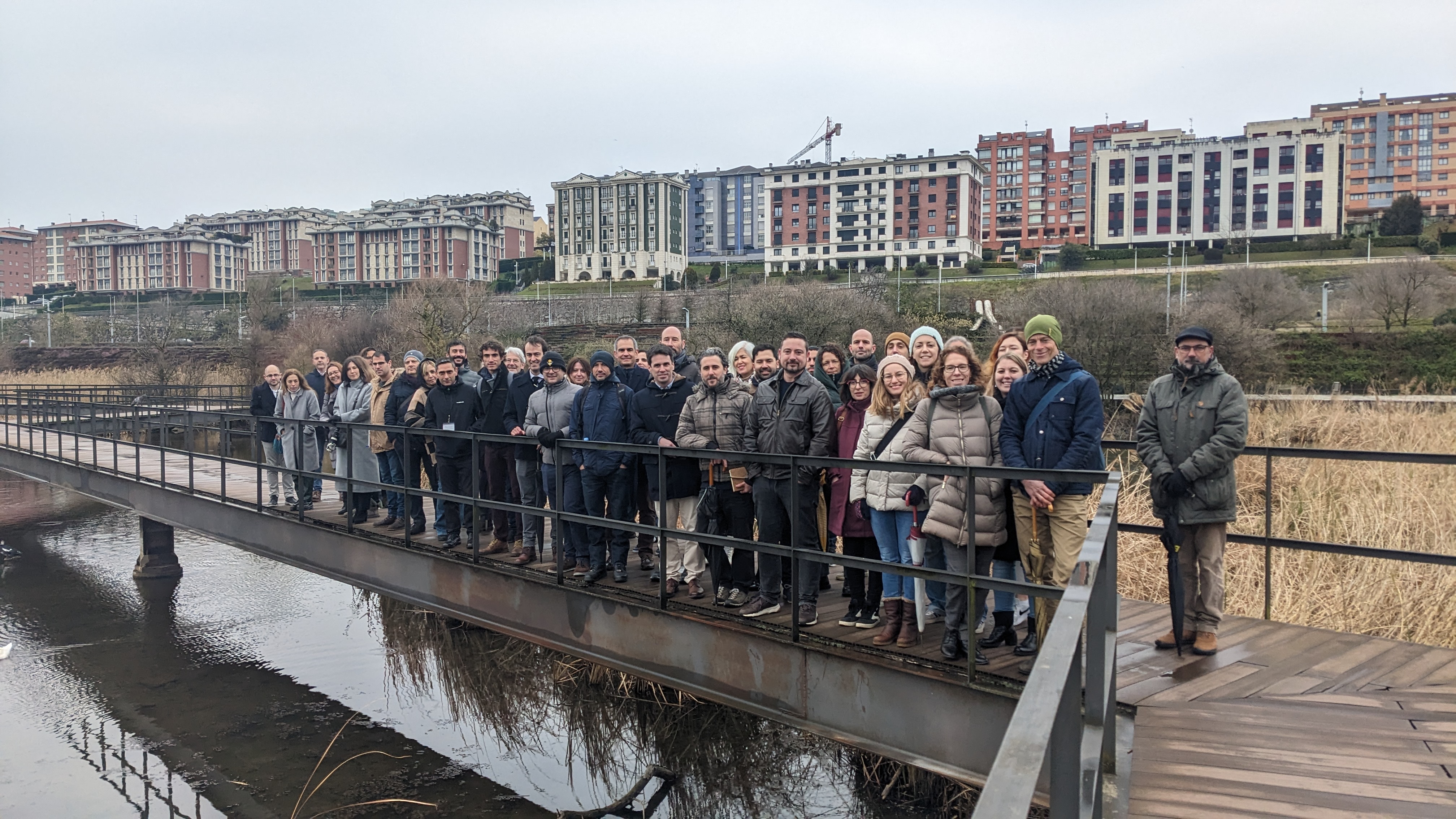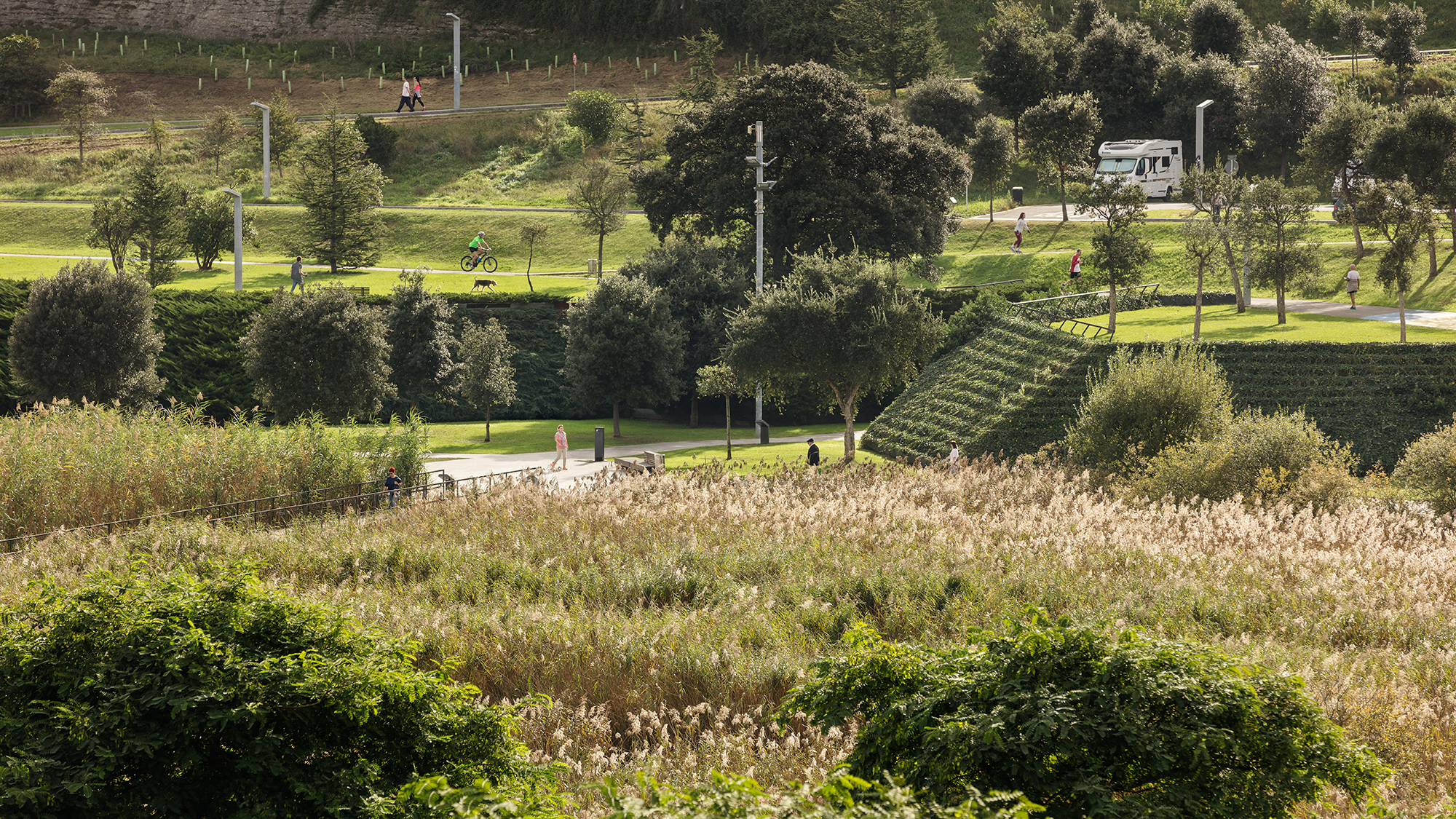
Highlights from the Santander Open Day and General Assembly
From 28th February to 02nd March, consortia members travelled to Santander for the D4RUNOFF Open Day and General Assembly. Over three days, The University of Cantabria hosted several activities related to the D4RUNOFF project, including a Climate Fresk, an Open Day for students and citizens, and the second project General Assembly. These activities were carried out:
- to present the D4RUNOFF project to students, citizens and local partners, like the city council,
- to visit the case study site of Las Llamas Park and view first-hand the various nature based solutions in place,
- to involve consortia in a co-design workshop that informs the final platform,
- to update consortia members on the progress of the project and tackle any challenges that might have occurred in the project so far.
Climate Fresk
Our partner, Eva Boo (Co-founder, Three o’clock) facilitated a Climate Fresk workshop for students at the University of Cantabria (UC). The Climate Fresk is a collaborative, scientific and fun way to learn about climate change. Through a card game, participants can learn how climate ‘functions’ and are empowered to make their own informed inferences about climate change. This is an important aspect of the project as it engages with the local community on a grass roots level.



Santander Open Day
The next day kicked off with the D4RUNOFF Open Day. Speakers and attendees were welcomed at the Civil and Environmental Engineering School of the University of Cantabria, by Jorge Rodríguez Hernández (GITECO Research Group, UC), who also leads work package three (WP3). Along with Jorge, the project was then presented by Margarita Rojo (Councillor of Environment, Santander City Council), Milagros Canga (Vice-Director of the Civil and Environmental Engineering School, UC), and José Ramón Vázquez Padín (Head of Quality in R+D, Aqualia). During the introduction, these representatives spoke about the importance of nature based solutions (NBS) to the revitalisation efforts of Santander and specifically, the wetlands of Las Llamas Park.


José Vázquez Padín presented the context of the D4RUNOFF project to the attendees. In a 2019 evaluation paper, the EU identified urban runoff as a source of avoidable pollution. Along with the emergence of new pollutants and the increase in extreme rainfall events, urban runoff poses a risk to public health and the environment. Each work package tackles a specific challenge and we will present more on this in coming articles. The presentation concluded with a summary of the visit to the other case study site, Odense, Denmark.
Next Roberto Soto (architect at the Projects and Works Department, Barcelona Municipal Institute of Urban Planning) covered the urban runoff challenges faced by the city and the subsequent issues of diffuse pollution. Using a variety of before and after photos and sketches of NBS, he illustrated the drastic change in the liveability of the city at different sites across the city. By incorporating a NBS design approach to urban planning, the city is greener and is successfully tackling water pollution due to urban runoff.



Luis Ángel Sañudo Fontaneda (Professor, University of Oviedo) presented next on maximising the opportunities and benefits of surface water management through Sustainable Urban Drainage Systems (SUDS). SUDS provide multiple benefits associated with four categories – quantity, quality, comfort or quality of life and biodiversity. Only when these four categories are addressed can it considered SUDS. While there are some challenges associated with this approach, like the impact of climate change on hydrological design parameters, including SUDS in educational programmes and increasing social awareness can help to alleviate some of the challenges.
Next, Diego Cicero (Phytobatea and RIA Association) presented a new technology for the creation and operation of floating wetlands – Phytobatea. From the Greek “Python” (plant), and “batea” (wooden floating platforms), the Phytobatea® is a modular device with high mechanical and chemical resistance and a long service life, designed for the construction and management of floating plant crops. The main field of application of the Phytobatea is the creation of floating wetlands for wastewater treatment and pollution control in any body of water. Some of the advantages of floating treatment wetlands include efficient treatment of water pollution, no electricity or chemicals required, highly resilient to variations in load and flow rate, minimal risk of malfunctions, minimum and simple maintenance requirements, no nuisance (odours, noise, mosquitoes…) and excellent environmental and landscape integration. Its applications have been tested in a variety of landscapes and trials continue being carried out to validate its potential to treat livestock wastewater, mining wastewater, micropollutants/emerging pollutants, besides acting as biodiversity reservoirs and CO2 sinks.
Ivan Blanco rounded off the morning session with Aqualia’s innovative approach to surface runoff solutions, highlighting the NICE project. The project includes the implementation of a range of NBS like, artificial wetlands for the treatment of sewage overflow, integrating landscaping in urban environments through planting a diversity of flora and utilising different designs based on the rainfall patterns of the area. Apart from the apparent benefits, these solutions also trap CO2, limit soil erosion and promotes biodiversity.



Next on the agenda was the visit to the Las Llamas Park nearby. But to understand the need for the revitalisation of the city, Pablo Ruiz (Parks and Gardens, Santander City Council) and Nacho Fernandez (SEO BirdLife) explained the dynamic growth of the city and its effects. Family houses surrounded by green spaces quickly became large concrete blocks. Problems with feral pigeons and the yellow-legged seagull led to an action plan for parks and urban green areas. This led to a greening drive all through the city focussing on plant health, native species, climate conditions and creating a network of green areas with other environmental elements. The participation and leadership of the Santander City Council allows the urban renaturation actions to be tackled cooperatively by the environmental and urban planning departments of the city council. The site visit began at the permeable car park, right beside the Las Llamas Park. Here, porous and permeable pavements are being trialled to assess their capacity and resilience to sediment clogging. There are monitoring stations built into selected spots to determine their efficiency. Moving on to the park, this elongated urban park of 11 hectares in the city of Santander, is now home to a multitude of birds, has a lagoon with reed beds and more than 2,500 trees. Waterfowl choose this area to stop or nest on their migratory journeys and this site has been missed for a number of years. Situated underneath the park is an integrated water management system and waste water pumping station run by Aqualia that was visited at the end of the tour.



Co-design workshop
After a quick lunch break, consortia members broke up into groups as part of the co-design workshop for the D4RUNOFF support tool. Facilitated by Eva Boo and Olga Glumac (Three o’clock), the workshop’s objectives and outcomes were clearly stated with the focus of developing the user experience. The participant’s tasks were to discuss and validate the proposed platform’s functionalities and co-develop prototypes of the user experience for each selected functionality. Split over two exercises, participants were first asked to prioritise three out of 15 functionalities most relevant to their profile, then choosing two functionalities per stakeholder type. Participants then worked in their groups to co-design a storyboard of the user experience and a framework mock-up for a key phase in the functionality. Once completed, each group presented their storyboard to the wider audience, explaining their process and the results. We will talk more about the results of these co-design workshops, so be sure to follow us for updates.



D4RUNOFF General Assembly
The next day, consortia convened for the D4RUNOFF bi-annual general assembly. Here each project work package was presented and discussed. Work package leads presented their progress so far, answered questions from their peers and discussed any challenges they faced or foresee. Overall progress is coming along nicely and challenges were discussed with the wider consortia to ensure transparency. The three days in Santander were a fruitful experience for all who attended. Special thanks to the University of Cantabria team for their hospitality and to all involved.



